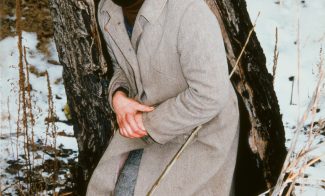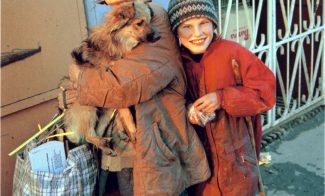Boris Mikhailov’s images, captured over more than 35 years, brought to life one of the most tumultuous chapters of the 20th century: the height, decline, and fall of the Soviet Union and its disturbing aftermath. Yet as they charted this extraordinary history, they also expressed the complex emotions and intellectual subtlety of a powerful artist. Mikhailov’s work ranges from the covert transgressions of a critical mind under a totalitarian regime to the tender depictions of the intimate life of his friends, his family, and himself. The Institute of Contemporary Art exhibited Mikhailov’s first retrospective in the United States, drawing on each of his most important series, including a variety of photographic media and techniques and artist’s books. The exhibition presented this compelling and unique body of work to American audiences for the first time.
Mikhailov was not formally trained as a photographer; rather, he became an artist by chance after he was fired from his engineering job when the KGB found nude photos he had taken of his wife. Thus began Mikhailov’s often transgressive career, whereby he would frequently subvert Soviet rules about photography—the ban on nudity being one of them. One of his earliest series, Red (1968-1975), includes photographs of Soviet parades and propaganda, which would seem in keeping with the mandate that photographs not bring into disrepute the Soviet government or way of life. Yet, on closer inspection, Mikhailov’s images subtly expose a failing ideology as they reveal the heavily symbolic function of the color red. As a consequence, Mikhailov’s photographs were rarely exhibited in public before the early 1990s, although friends, family, and fellow artists saw them in private exhibitions in his or friends’ apartments.
Mikhailov has lived almost his whole life in Kharkov, Ukraine, and the city has served as a constant inspiration for his work. By the Ground (1991) is a series of sepia-toned, panoramic photographs that he shot from waist level of street scenes in Kharkov and Moscow. One of Mikhailov’s most controversial series, Case History (1997-1998), consists of approximately 500 photographs of the large homeless community in Kharkov, which has appeared since the dismantling of Communism. These graphic, difficult images depict the ailing bodies of the so-called bomzhes, who Mikhailov would often pay to pose for him. While Mikhailov acknowledges the complicated ethical questions this series raises, his work reveals a world that most do not see or would rather ignore. As Mikhailov has stated, because of the restrictions on photography during the Soviet era, many of the most horrific moments in their history have no photographic record—leaving history essentially “dusted.”
Some of Mikhailov’s work during the early 2000s has grown out of experiences he has had since his move to Berlin in the late 1990s. One of the first series he completed after his move to the west was TV-Mania, (2000-2002), a group of photographs he took of his television of programs from America, Europe, and Russia. For Mikhailov, as for many people acclimating to a new country, the television provided a way to understand and become comfortable with his new surroundings. As is characteristic of Mikhailov’s work, the photographs in TV-Mania highlight a range of human emotion, from the humorous to the disturbing, from the mundane to the absurd.
Mikhailov’s work has been awarded numerous prizes, including the prestigious Hasselblad Foundation Award (2000). Boris Mikhailov: A Retrospective was organized by the Fotomuseum Winterthur, Switzerland. The exhibition was hailed in Artforum magazine as among the best exhibitions at the time, proclaiming Mikhailov “one of the world’s greatest living photographers.”

